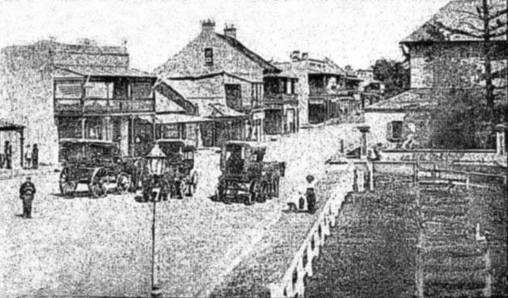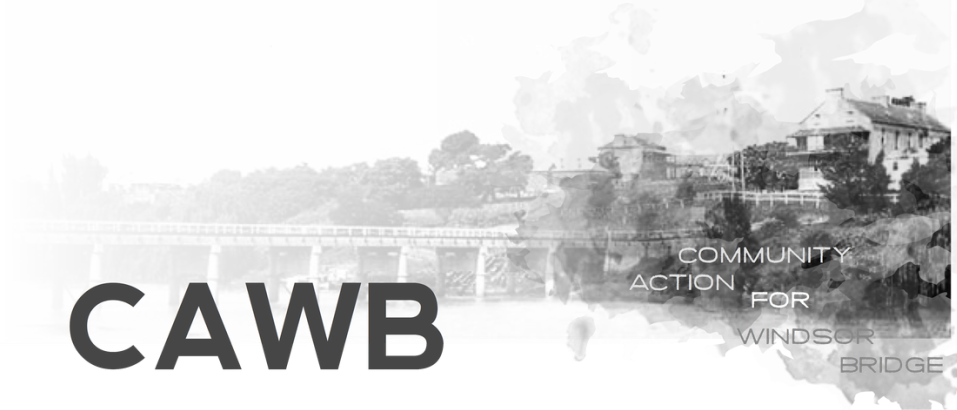
This unusual photograph of Thompson Square appeared in the Sunday Times on the 28 March, 1909. It depicts “ the old officers’ mess house, afterwards Robert Fitzgerald’s Mansion, now Royal Hotel: also part of Thompson Square”. It appears to have been taken from the upper balcony of Craignish (River Music). The building on the left is often not depicted very well in photos, but here we can see what it looked like. Note the wonderful street lamp in the foreground. The Royal Hotel ( the Macquarie Arms ) still retains it’s early appearance and we can see into the grassy parkland of the Square. But, “what are those grave-like shapes in a row contained within the sturdy white fence”? Does anybody know what they are?
In an attempt to discover if any more photos like this existed, the researcher noted the name of the photographer in the corner of the image – Frank Eather, Windsor, 1909. A little bit of research revealed that Frank Hilton Eather had been born in Gunnedah, 1883, to Joseph H. Rutter Eather and Clara Eather. A daughter, Martha was born in 1885 in Narrabri. Sadly, Joseph had died in 1884, just before his daughter’s birth.
At some time the little family moved to Windsor, perhaps to be near other family members. We find Clara living in George Street. Frank makes his mark as a talented artist in many different areas. He has a very prominent role in theatrical endeavours, becoming the manager of the Windsor Amateur Dramatic Club, the members of which present him with a nice watch and chain in recognition of his valuable services, always so freely given. He energetically organises benefit concerts for down on their luck Windsor families and even one for the School of Arts in 1907 which the locals said was the best entertainment ever organised. His talents as a visual artist were appreciated because he did some good photo work and line work for Sydney publications. The Gazette snapped him up to do line work illustrations of prominent people who were associated with the Hawkesbury Show in 1905, as well as photos of prize winning horses. Frank’s sister Mattie was a good pianist, and they often appeared together playing duets/solos on piano.
Into this idyllic world came the dark and horrifying Great War. Frank joined up on the 3rd Nov. 1914 at Liverpool. He joined the 1st Battalion, A.I.F. He was 5 ft 9 ins, had blue eyes and dark brown hair.
He survived Gallipoli but his poor mother and sister receive back in the mail a letter which they had sent to him....the envelope has written in pencil in the corner “killed in action”. This would have come as a terrific shock, but they continue to receive letters from Frank. It appears the Army has confused him with a Cecil George Eather, also from Windsor, who was killed in action at Gallipoli. Frank is sent to France and in June 1917 the following article appears in the Gazette – “News reached Windsor on Wednesday evening that Sergeant Frank Eather, son of Mrs Eather of George Street is reported missing between May 5-7. We hope his distracted mother and sister will receive brighter news soon.”
But this was not to be. His name appears on The Roll of Honour in the Gazette – “Sergeant Frank Eather. Killed in action at Bullecourt May 3rd, 1917. A brave Anzac.”
A look at his War Record reveals he and one other soldier were blown to bits by a shell which exploded right on them as they were moving into positions in a trench. His remains were buried in the trench where he fell.
Clara and Martha leave Windsor soon after. They both eventually pass away in Burwood.
What a loss for all involved.
Clara is sent Frank’s personal belongings. They are not much but prominent is a watch ( damaged ). Was this the watch given him in 1908 by thankful members of his Amateur Dramatic Club?
Similar stories were repeated for many families in Windsor and the Hawkesbury during the time of The Great War.
In an attempt to discover if any more photos like this existed, the researcher noted the name of the photographer in the corner of the image – Frank Eather, Windsor, 1909. A little bit of research revealed that Frank Hilton Eather had been born in Gunnedah, 1883, to Joseph H. Rutter Eather and Clara Eather. A daughter, Martha was born in 1885 in Narrabri. Sadly, Joseph had died in 1884, just before his daughter’s birth.
At some time the little family moved to Windsor, perhaps to be near other family members. We find Clara living in George Street. Frank makes his mark as a talented artist in many different areas. He has a very prominent role in theatrical endeavours, becoming the manager of the Windsor Amateur Dramatic Club, the members of which present him with a nice watch and chain in recognition of his valuable services, always so freely given. He energetically organises benefit concerts for down on their luck Windsor families and even one for the School of Arts in 1907 which the locals said was the best entertainment ever organised. His talents as a visual artist were appreciated because he did some good photo work and line work for Sydney publications. The Gazette snapped him up to do line work illustrations of prominent people who were associated with the Hawkesbury Show in 1905, as well as photos of prize winning horses. Frank’s sister Mattie was a good pianist, and they often appeared together playing duets/solos on piano.
Into this idyllic world came the dark and horrifying Great War. Frank joined up on the 3rd Nov. 1914 at Liverpool. He joined the 1st Battalion, A.I.F. He was 5 ft 9 ins, had blue eyes and dark brown hair.
He survived Gallipoli but his poor mother and sister receive back in the mail a letter which they had sent to him....the envelope has written in pencil in the corner “killed in action”. This would have come as a terrific shock, but they continue to receive letters from Frank. It appears the Army has confused him with a Cecil George Eather, also from Windsor, who was killed in action at Gallipoli. Frank is sent to France and in June 1917 the following article appears in the Gazette – “News reached Windsor on Wednesday evening that Sergeant Frank Eather, son of Mrs Eather of George Street is reported missing between May 5-7. We hope his distracted mother and sister will receive brighter news soon.”
But this was not to be. His name appears on The Roll of Honour in the Gazette – “Sergeant Frank Eather. Killed in action at Bullecourt May 3rd, 1917. A brave Anzac.”
A look at his War Record reveals he and one other soldier were blown to bits by a shell which exploded right on them as they were moving into positions in a trench. His remains were buried in the trench where he fell.
Clara and Martha leave Windsor soon after. They both eventually pass away in Burwood.
What a loss for all involved.
Clara is sent Frank’s personal belongings. They are not much but prominent is a watch ( damaged ). Was this the watch given him in 1908 by thankful members of his Amateur Dramatic Club?
Similar stories were repeated for many families in Windsor and the Hawkesbury during the time of The Great War.


